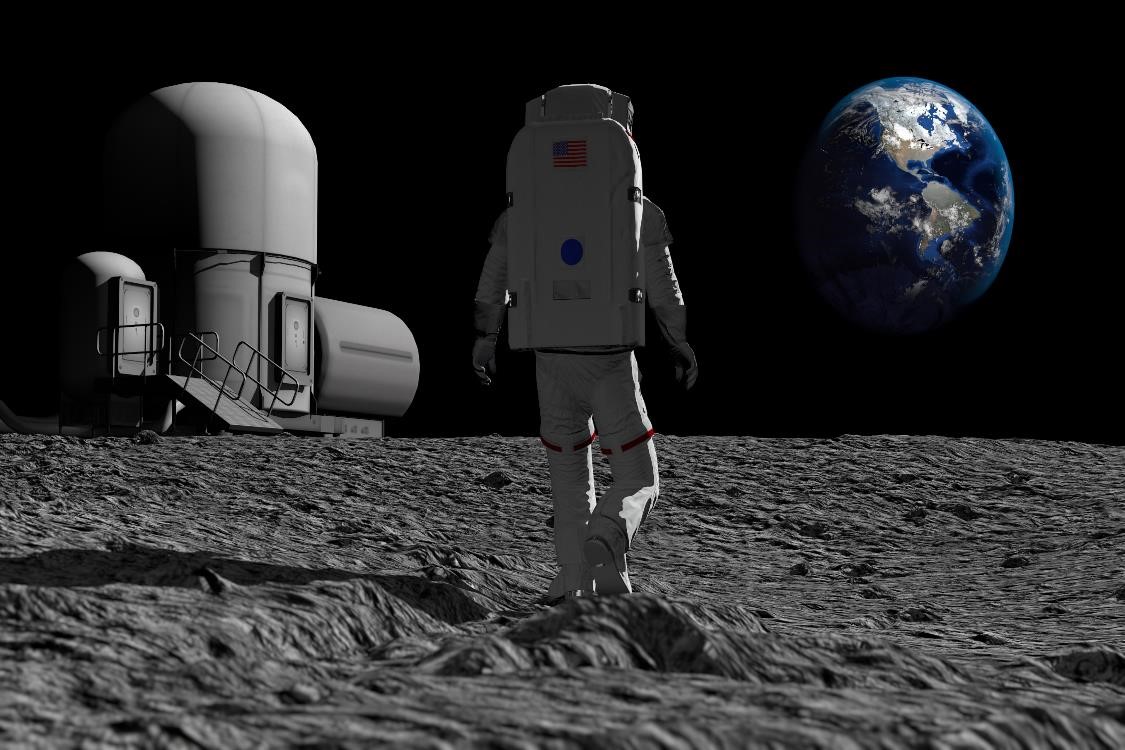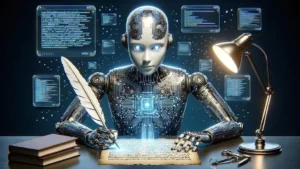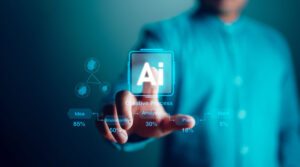Mankind has always been fascinated by space exploration. The universe is so large and so full of mysteries waiting to be solved. What if I told you that robots are leading this pursuit? As we venture out into the unknown, these incredible mechanisms become increasingly vital in discovering the secrets of outer space.
Robotics revolutionises how we explore the universe, from distant planets to asteroids and moons. They can withstand hostile environments and perform tasks that are challenging for humans. Their accuracy and adaptability make them perfect companions in our cosmic quests.
But how does this affect the way humanity relates to space? How do these robotic explorers redefine our understanding of what is out there? Come with me and witness a captivating journey through history, advancements, challenges and ethics surrounding robotics in space exploration. It is time to unearth a new frontier where human intelligence meets artificial competence.
History of Space Exploration:
The expedition into space began in the mid-twentieth century. The Soviet Union launched Sputnik 1 in 1957, which was a milestone moment that started the space race. This minuscule satellite revolved around earth and dumbfounded the globe. Sometime later, individuals ventured beyond our skies as Yuri Gagarin made his inaugural flight in 1961; this achievement serves as an important mark for many generations who grew up looking at the sky.
Apollo programme was another frontier that saw the last step of landing Apollo 11 on the moon in 1969. The famous words of Neil Armstrong will forever be reflected in history as he made his first strides on lunar soil. Mars and other celestial bodies have been better understood by robotic missions over the next few decades. Every mission offered irreplaceable information about our solar system through exploring it as well as developing a basis for further deep space investigation. To date, spacecraft like Voyager are still out there, revealing fantastic experiences.
Advancements in Robotics for Space Exploration:
Robotic technology revolutionises how we explore outer space. The advent of AI and machine learning has enabled robots to perform complex tasks independently. One such innovation is the design of sophisticated robot arms capable of dexterous movements. With this tool, spacecraft or scientific instruments can be repaired with high precision without requiring a crew member to assist in it. Another important tool is the use of drones that are able to give an aerial view of planetary surfaces, capturing high-resolution photographs and data where they were previously inaccessible, and this increases our knowledge about remote areas.
Moreover, rovers with sophisticated sensors and cameras can move in difficult terrains of Mars and other planets. Furthermore, the ability to examine soil samples is invaluable knowledge for potential life forms beyond our planet. This not only enhances their work but also increases astronauts’ safety by minimising exposure to dangerous situations in space.
Problems and Limitations of Robot Use in Space:
Space is an unhospitable habitat. Several challenges have been experienced by robots, which limit their performance.
- The first issue is communication delays; signals sent between Earth and remote spacecraft may take several minutes or even hours, making real-time decision-making difficult. This delay limits the ability to control robotic systems during crucial operations.
- Equally important are the harsh conditions existing in space itself. Robotic components can be destroyed or their functioning impaired as a result of extreme temperatures, radiation and microgravity. Engineers must produce robots with specific materials that can withstand these elements.
- Another difficulty comes from power supply in complex deep-space missions where solar panels might not produce enough electricity in areas far away from the sun, thus reducing operational abilities of robot explorers.
- Maintenance also poses another problem. Once deployed on planets such as Mars or natural satellites like Europa, repairs become almost impossible unless human beings intervene. The longer a mission continues, the more robots become vulnerable to wear and tear through dust and other environmental factors.
These obstacles demonstrate that improvements need to be made in space exploration-focused robotics
Ethical Considerations in Space Exploration with Robotics:
As we continue to push the boundaries of space exploration, issues of ethics related to robotics emerge. Many a time, these machines are our eyes and hands in too harsh environments for human existence. But then again, what rights do these robots have if at all? The possibility of independent decision-making raises questions of responsibility. Who takes the blame when an error is committed by a robot? The engineers? The mission operators? The grey area only complicates our understanding of ethical principles governing human-robot interactions.
Moreover, how do we make certain that these technologies respect extraterrestrial environments? Planetary protection guidelines intend to prevent contamination and protect other worlds. However, enforcing them becomes difficult when sending robots into unknown territories for exploration. Societal impacts should also be looked into. Subsequently, such advancement might lead to the replacement of humans with actual forms on various missions into space, thereby leaving people jobless on earth.
As we explore the universe along with our mechanical friends, there has to be a balance between innovation and ethical responsibility so that we can go beyond this cosmic dimension as well as remain within it through the companionship of our metallic counterparts.
The Future of Space Exploration and Robotics:
The future of space exploration is poised for a remarkable transformation with advanced robotics. Imagine fleets of independent drones exploring faraway planets, collecting invaluable information while humans are either safe on Earth or in orbit. As AI advances, robots will become better at doing complex things. They may be able to build Mars habitats before people ever reach them. This proactive approach not only saves time but also improves the safety of manned missions.
The cooperation between human and robot systems will redefine cosmic exploration strategies. Humans can take on decision-making and creative thinking assignments, whereas robots perform basic routine roles and any other dangerous ones. Furthermore, novel materials and technologies have come into view to improve resistance and productivity in extreme situations. Further progress in robotics for sustainable life support systems is linked to the search for long-term habitation beyond our planet’s limits. This partnership guarantees that we will open up new avenues as we go deeper into space.
Advantages of Merging Space Exploration and Robotics:
Merging space exploration and robotics creates new opportunities. Robots can also reach places that are harmful or unreachable to humans. This ability goes a long way towards enhancing our knowledge of heavenly bodies. They acquire information about planets, moons, or asteroids with accuracy and efficiency. The data gathered helps scientists understand environments well beyond the atmosphere of the earth.In addition, robotic technologies minimise the risks associated with human missions.Firstly, they can be sent ahead to test conditions before astronauts arrive.
Further, robots are used to improve mission schedules and resource allocation. With automation taking care of repetitive duties, human crews can focus on complicated issues requiring rational thought. Artificial intelligence advances have also made it possible for them to adjust their behaviours based on feedback obtained from the environment.This kind of flexibility is important during long-distance trips through deep space, where communication lags make things difficult.It is certain that such integration will guide future explorations as we go deeper into the cosmos.
Conclusion:
We are at the threshold of a new era wherein space exploration and robotics will revolutionise our understanding of the universe. That is why there exists a great scope for knowledge since it encourages exploration of hitherto untouched areas. This is where robots come in handy. In fact, they are important because they can withstand tough conditions that would endanger human life while providing useful data.
The bond between people and technology leads to novelty. With joint efforts, they transcend boundaries and question existing facts. Forthcoming expeditions might unearth enigmas about remote planets or yield evidence concerning extraterrestrial life forms. Every progression thus far has unveiled fresh opportunities that distance or peril had kept sealed tight under lock and key. Pursuing this path not only fosters scientific inquiry but also sparks the imagination across generations—no matter how old you are! The world itself is waiting for us; it poses questions that can only be answered by undertaking travel.
FAQs:
1. What do robots contribute to space travel?
Robots have different functionalities, ranging from experimenting to going to distant planets. These machines have the ability to obtain information that could be dangerous or impossible for human beings to collect directly.
2. How has progress in robot technology affected space missions?
In turn, these advancements in robotics have increased their autonomy as well as their intelligence levels. They are more efficient due to better sensors and artificial intelligence capabilities, which enable them to work with minimum supervision from humans, thereby leading to efficient mission execution.
3. Does the use of robots in space expose human beings to danger?
Definitely, the use of robots, which eliminates risks for astronauts, is not an assurance that there are no problems associated with them, such as probable technical deficits and limitations regarding response to unforeseen occurrences.
4. What sort of ethical questions emerge when we start using robots for exploration?
Thus, moral matters include the impact of robot life forms on other planets and our treatment of these evolving mechanisms. Moreover, the potential effect on future ecosystems has serious implications.
5. What is happening between robotics and space travel next?
Given improved technology, we should anticipate a much closer relationship between human beings and machines. Through this collaboration, other unconsidered possibilities may be opened up.



